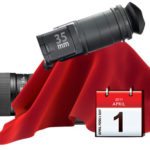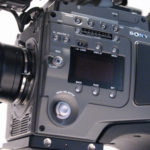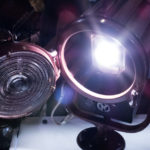
The amazing little GoPro HDHero cameras can record full 1080p HD video, as well as timelapse and single shots. They’re tiny and easy to rig anywhere, as in the setup below where we used them on a corporate shoot, mounting six on laptops for a video chat, instead of the built-in iSight cameras.


But camera movement is where the GoPros shine. The HDHero comes with helmet mount, auto mount, body mount, or wrist mount, with both waterproof and non-waterproof housings. I recently bought the HDHero camera, helmet rigging, suction cup for autos, tiny clip-on LCD monitor, extra batteries and clip-on battery pack.
In Timelapse mode on the GoPros, you can only control the interval between shots (2, 5, 10, 30, or 60 seconds). Everything else is automatic—shutter, aperture, video gains, etc. The cameras have a fixed, wide-angle lens. No zoom.

Shooting timelapse results in folders with thousands of jpegs. A new folder is created each time you start shooting a timelapse sequence. But when you render your image sequences later (I used Quicktime 7 Pro’s File > Open Image Sequence command), you can control the frame-per-second rate, creating different length clips of the same event, with different speeds of movement. The moving GoPros clips in “Traffic Study” were all rendered at 30 fps, and also at either 10 or 12 fps. Sometimes I used the slower speeds in the final edit, sometimes the faster ones.

The blurriness which adds so much energy and motion to these timelapse sequences resulted from the GoPro’s shutter staying open long enough to smear the motion, for one or more of these reasons:
- The camera itself moved past fixed objects very quickly
- Objects on screen moved very quickly
- There was not much light, the aperture was wide open, and the shutter dragged (stayed open a long time) to provide an adequate exposure
We shot most of the static-camera sequences with my Canon 5D and the Canon’s TC-80N3 Timer/Remote Control, variously adjusting the interval between frames from 1/2 to 2 seconds, and varying the shutter-open time from ¼ second to one full second. These clips were rendered at 10 and 30 fps.
Some of the colors and effects are amazing. Editing in iMovie definitely added some down-resing and compression artifacts, but you can’t beat the ease of use (and cheapness of the software!).
Traffic Study
Cinematography: Bill Zarchy, Mush Emmons
Editing: Bill Zarchy
Cameras: Canon 5D Mark II, GoPro HDHero
Edited in iMovie
Music: Villa-Lobos, Prelude #1
Shot in Sao Paulo, Brazil, in August 2011



